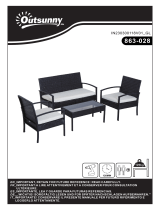
20
Before performing any cleaning or maintenance operations, disconnect the appliance by un-
plugging it or using the main switch. The manufacturer disclaims all liability for any damage
that may be directly or indirectly caused to people, things and animals due to the failure to
follow all the instructions provided in this booklet and above all the warnings relating to the
installation, operation and maintenance of the appliance.
- there is a fire risk if cleaning is not carried out in accordance with the instructions.
CAUTION: Accessible parts may become hot when used with cooking appliances.
- Max. length screw for fixing the chimney is 10 mm (provided by the manufacturer).
WARNING: Failure to install the screws or fixing device in accordance with these instructions
may result in electrical hazards.
Warning only for Australia: hood width less than 90 cm: use max. 4 hobs
TECHNICAL SPECIFICATIONS
B
The technical data pertaining to the electric appliance The technical specifications of the ap-
pliance are shown on the rating plates located inside the range hood.
INSTALLATION
C
(Section reserved for qualified installers of the range hood)
The distance between the hob and the lowest part of the rangehood is normally at least 65 cm
(see figure C1). This distance is measuresd in the lowest part of the rangehood not operating at
safety voltage. Based on this detail provided by European Standards, the distance may be re-
duced in some models as specified in the general catalogue. If the instructions for installation
for the gas hob specify a greater distance, this has to be taken into account.
In the outside exhaust version, the diameter of the fume discharge duct must be no smaller
than the range hood connection.
In the horizontal sections, the duct must slope slightly (around 10%) upwards, so as to better
convey the air outside of the room.
Avoid using angled pipes, make sure that the pipes are at least of the minimum length.
Comply with the current regulations on air discharge into the atmosphere.
If a boiler, stove, fireplace, etc. that uses gas or other fuels is being used at the same time,
make sure the room where the fumes are extracted is well ventilated, in compliance with the
current regulations.
Mounting instruction: see section “O” of the booklet.
ELECTRICAL CONNECTIONS
D
(Section reserved for qualified installers)
WARNING! Before doing any work inside the range hood, disconnect the appliance from the
mains power supply. Check that the wires inside the range hood are not disconnected or cut;
if this is the case, contact your nearest service centre. The electrical connections must be
performed by qualified personnel.
The connections must be performed in compliance with the legal standards in force. Check
that the relief valve and the electrical system are able to support the load of the appliance (see
the technical specifications in point B).
Some types of appliance are supplied with a cable without plug; in this case, “standardised”
plugs must be used, keeping in mind that:
- the yellow-green wire must be used for the earth,
- the blue/white wire must be used for the neutral,
- the brown/black wire must be used for the phase; the cable must not come into contact with
hot parts (over 70°C).












